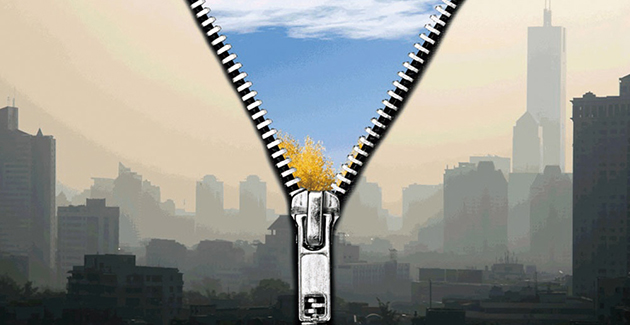Professionals play a key role in anti-smog action

Desirable weather conditions contribute to more blue sky days while human efforts play a bigger role in improving air quality. Professionals’ research and suggestions should never be underestimated.
People knew little about smog a few years ago. In order to tackle smog, the first thing is to identify the pollutants and their sources. Such an analysis was carried out in various places and some achievements have been made. The State Council called upon governments to discover the causes of and solutions to heavy air pollution in April 2017 because isolated laboratory experiments can fail to reflect real circumstances. Furthermore, environmental departments have admitted flaws in anti-smog actions targeting Beijing-Tianjin-Hebei region and surrounding area as air quality remained poor during the winter heating season from 2016 to 2017, including many days with heavy pollution.
Beijing and Tianjin are home to many renowned universities and research institutes, but other cities in the neighboring provinces lag behind. Also, decision-makers will not know what steps to take if the changing emitting sources are not tracked. In this context, one-third of the 1,500 professionals have been dispatched to this region, allowing experts, technology professionals and researchers to apply cutting-edge academic results to the local fights against smog.
Cities vary greatly in terms of sector layout, energy structure, transportation network and weather conditions. Experts determine the causes of pollution in each city based on a focused analysis and propose solutions. Only in this way can the environmental and economic benefits be balanced, said Li Shipei, an expert from the follow-up research group in Cangzhou, Hebei Province.
Staying in different cities, professionals from national and local institutes conduct studies and provide consultation services on technology issues. Follow-up research groups have their own targets, and different project teams are responsible for the work. “In a word, our mission is to conduct careful analysis, identify pollutants from all sorts of statistical data and give suggestions,” said Li Li, a research fellow from Shanghai Academy of Environmental Sciences. She is currently leading the follow-up research group in Dezhou, Shandong Province.
The work group in Anyang, Henan Province carried out thorough research on eight sectors, covering producers of glass, ceramics, coking and chemical industry. They formulated 16 regulations for pollution prevention and made customized solutions for 76 enterprises. Experts working in Taiyuan, Shanxi Province, proposed a unified assessment of coking companies’ facilities for environmental protection and business operating conditions. Governments can implement differentiated regulatory measures while coking, iron and steel companies can apply precise management solutions. Such detailed work is a testament to what work experts have done to achieve targeted emission reduction. They don’t want to overlook any problem.
It is of the greatest importance whether the “intellectual aid” can be adopted by local governments. The mechanism touches upon real-time reports, regular dispatch and heavy pollution consultation, thus realizing seamless connection between scientific research and practical work. “Local governments will send feedback after receiving our analysis reports. Changes can be made in a short time. Some city leaders also have filed the suggestions into government documents so that our achievements and proposals can serve as practical solutions,” said Xue Zhigang, a research fellow at the Chinese Research Academy of Environmental Sciences. He currently works at the follow-up group in Taiyuan.
Experts reviewed the achievements of scientific projects and the follow-up working groups at a recent seminar on the causes of and solutions to heavy air pollution. Researchers have worked out a more detailed and accurate list of pollution sources. Beijing, Tianjin and 26 other cities in their neighboring provinces—the key emitting area in the country—account for less than 3 percent of national territory but emit more than 10 percent of sulfur dioxide and volatile organic compounds as well as more than 15 percent of nitrogen oxides and primary particular matter, offering preliminary evidence about the causes of heavy air pollution particularly in fall and winter.
Furthermore, project teams have initially set up the country’s largest multi-element comprehensive network for atmosphere observation by integrating research resources of universities and institutes. The network has made weather forecasts, whole-process monitoring and quick analysis into a reality. Also, they have established a unified method for working out particle sources and a platform for managing and sharing data in which about 26 million items of information concerning environment protection, academic research and meteorology are stored.
The efforts of expert panels have resulted in more blue sky days last winter. The average density of fine particulate matter (PM2.5) in Beijing, Tianjin and 26 other neighboring cities has been reduced by 11.7 percent and the number of heavy pollution days in the area has decreased by 28.8 percent. In terms of Beijing, the reduction numbers are respectively 20.5 percent and 43.6 percent. Also, the work of expert panels has given technological support to the three-year plan against air pollution.
(edited by MA YUHONG)
